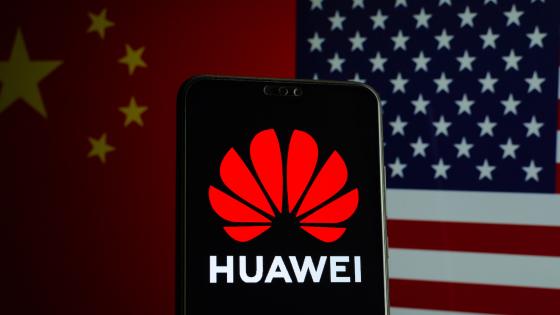The large and growing trade imbalances of various countries in the world economy has led to growing concern among policymakers and commentators. This has fuelled calls for “global rebalancing” in which countries with persistent trade deficits, such as the US, would reduce net imports, while countries with persistent trade surpluses, such as China, would reduce net exports. This issue has become associated with concerns about the managed exchange rates of China and others, as well as about budget imbalances of the US and others. My purpose here is to look at global imbalances from the perspective that a trade theorist would take to global trade. The issue is whether trade imbalances are necessarily harmful to global welfare and therefore a sign that policies are needed to correct them.
From a trade perspective, trade imbalances need not be a sign of disequilibrium. Rather, they could be a simple indication that there is trade across time, as well as across space. This is illustrated simply in Figure 1, which shows the familiar trade theorists’ illustration of differing production possibilities in two countries, A and B, together with indifference curves showing the welfare that they can achieve both in autarky and with free trade. However, instead of the axes showing quantities of two different goods at the same point in time, they show what could be the same good but at different points in time. That is, country A is relatively better at, and therefore has a comparative advantage in, producing the good in the present, while country B’s production possibilities are similarly skewed toward production in the future. In autarky, these differences are reflected in a lower relative price of present compared to future consumption in country A than in country B, which corresponds to a lower real interest rate in A than in B. With free trade, shown by price lines with the same slope and thus the same interest rate in both countries, country A expands production in the present, exporting its excess to country B, while B does the reverse. In the present, it follows that Country A is producing more than it is consuming, and thus that it is running a trade surplus, while Country B is running a deficit.
Figure 1. Free inter-temporal trade with identical preferences
Are there gains from this trade?
Certainly. Each country is exploiting its own inter-temporal comparative advantage, and both are accordingly able to reach higher indifference curves, representing higher welfare. If this were the situation of today’s world economy, it would not be cause for concern.
But note what distinguishes the two countries in Figure 1. Country A has a comparative advantage in present production, while country B has a comparative advantage in future production. This difference in the two production possibility curves means that the ratio of real output in the future, compared to the present, is larger in country B than in country A, or in other words that real output is growing faster, over time, in country B. That, indeed, is why it makes sense for consumers in country B to run a trade deficit, in effect smoothing their consumption over time.
How does this fit with reality?
But if we try to match this scenario to the current situation in the world economy, we have a problem. The country that is running the largest chronic trade surplus is rapidly-growing China, not slow-growing US. Thus if we had to identify countries A and B in the figure with anybody, the US would be country A and China would be country B. The theory would tell us that the US should be running a surplus and China should be running a deficit.
How can we account, in the context of this model, for the fact that the countries are doing just the opposite? One possibility would be to let them have different preferences. Suppose that country A has an even greater preference for present consumption than its ability to produce in the present, while country B has a similarly extreme preference for consuming in the future. Figure 2 shows such a free trade equilibrium. It has the two countries gaining from this inter-temporal trade, which is now motivated more by their difference in preferences than by their difference in ability to produce.
Figure 2. Free inter-temporal trade with non-identical preferences, country A consumers favouring Qpresent and country B consumers favouring Qfuture.
Is Figure 2 a plausible explanation of what we see in the world? Perhaps. It is certainly true that many of us in the US, myself included, act as though we prefer present over future consumption to an extreme degree, and the savings rates of China and other developing countries suggest the opposite preference. However, if that were the whole story, then we would expect a higher real interest rate in the US than in China, except to the extent that trade and/or capital flows have equalised interest rates internationally. That does not seem plausible to me. And in any case, I hesitate to rely on an explanation of behaviour that rests too much on differences in preferences
Welfare-reducing trade
An alternative would be to ask whether policies might exist that interfere with the free inter-temporal trade of Figure 1 and that could alter its outcome. In trade theory, we are most accustomed to considering barriers to trade such as tariffs, but these would not help in this case. They would only drive the trade imbalances to zero, not reverse them. What we need instead are policies that artificially stimulate trade that is counter to comparative advantage. Most simply, suppose that countries use policies to subsidise, or otherwise encourage, exports of the good in which they have comparative disadvantage (or imports of the other).
Specifically, suppose that country A subsidises exports of the future good, while country B subsidises exports of the present good. The outcome of this pair of policies is shown in Figure 3. Trade takes place along a common dashed price line. Because of the subsidy to export of the future good in country A, its relative price is higher within the domestic market, for both producers and consumers, than on the world market. The opposite is true in country B. And in both countries, the budgets of consumers at domestic prices are reduced below the value of production by the need to levy lump-sum taxes to finance the subsidies. Although this may all look somewhat unfamiliar, it is just the export-subsidy analogue of the usual two-country analysis of an import tariff.
The result shown in Figure 3 has both countries welfare reduced well below the autarky level. This is not necessarily the case, since it would be possible for one country to gain if its own subsidy were sufficiently small compared to the other. But a net loss for the world as a whole, compared to autarky, is necessary, since by trading contrary to comparative advantage, the world is promoting inefficiency.
Figure 3. Policy-distorted inter-temporal trade: Country A subsidises exports of Qfuture and country B subsidises exports of Qpresent.
Figure 3 tells a dramatic story of how pernicious a global imbalance can be if it is caused by policies that promote inter-temporal trade that is contrary to comparative advantage. The fact that certain fast-growing economies such as China are running trade surpluses while slow-growing economies such as the US are running deficits is suggestive that something like this might be going on. One wonders, however, what types of policies might exist that play the role of the export subsidies in Figure 3.
Imbalances and policy
In the case of China, the answer is fairly straightforward. For many years, the Chinese government has accumulated foreign assets as a by-product of its exchange-market intervention. It is, in effect, lending massively each year to the rest of the world. That policy comes about as close as I can imagine to subsidising exports of present goods.
In the US, it is harder to see a policy that can be interpreted as subsidising future exports or present imports. However the stance of both monetary and fiscal policies over recent years seems to have promoted present consumption over future consumption, and thus low saving. That does not fit quite as neatly into this theoretical framework, but it seems likely to have similar effects.
To conclude, this interpretation of global imbalance, from the perspective of trade theory, suggests that it is likely to be undermining world welfare. And to the extent that it is caused by policies of both the surplus and deficit countries, it is likely to be making both of them worse off.






